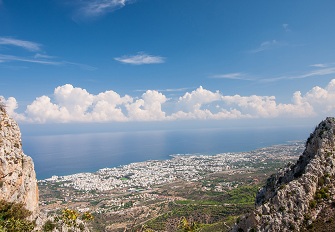Aerosols: pollutants from afar

Related topics
Environment & climate action Funding Researchers European Research Council Cyprus Environment Climate action, environment, resource efficiency and raw materialsdate: 24/01/2014
Project: Consistent computation of the chemistry-...
acronym: C8
See also: Info-centre
Contact: http://erc.europa.eu/
These types of very fine dust particles in the atmosphere are called aerosols. And they are playing an increasingly important role in the climate of the Eastern Mediterranean.
To understand the interaction of aerosols with climate change in this region, Professor Jos Lelieveld, the director of the Max Planck institute of Atmospheric Chemistry, obtained a grant of € 2.2 million from the European Research Council for the C8 project (Consistent computation of the chemistry-cloud continuum and climate change in Cyprus). The 60-month project started in January 2009 and is hosted by The Cyprus Institute in Nicosia. It was part of the European "Ideas" programme- innovative projects on the "edge" of current research, explains Panos Hadjinicolaou, a researcher at The Cyprus Institute and a participant in the project. "We are studying the effects of atmospheric chemistry and aerosols in the climate of our region and their feedbacks," says Hadjinicolaou.
For this research, the Eastern Mediterranean provided an interesting backdrop because it has temperatures rising faster than in other areas, making it a hotspot for climate change. Cyprus, for its little local industrial pollution, experiences also high levels of ozone and particulate matter pollution . However, most of the aerosols are blown in from outside the region, coming from the sandstorms in the Sahara and the burning of wood in Eastern Europe. Another effect is the increased levels of transported ozone-forming substances in combination with the cloud-free and intense sunlight conditions, which result in higher concentrations of ground-level ozone, making the Mediterranean also an ozone hotspot.
Researchers discovered a connection between the northerly winds and the and rainfall in South Asia, during the Indian Monsoon."There is a spectacular synchronisation between these two phenomena: the onset of the monsoons in India in the summer, and the appearance of the strong northerly winds in the Eastern Mediterranean that it may control the episodes of high-ozone pollution near the ground," says Hadjinicolaou.
To study these effects, the team uses results from meteorological data and terrestrial and satellite observations of aerosols and chemicals in the atmosphere. To understand these phenomena, they use computer-based climate models, such as those developed for the IPCC (Intergovernmental Panel on Climate Change). The C8 team is also downscaling the projections of these models to make them usable for the assessment of climate on a regional scale.
These models also include the effects of the interaction of aerosols with clouds. First results indicate that in regions influenced by desert dust the ability of particles to take-up water and serve as cloud condensation nuclei can increase due to the mixing with air pollution. "Our ultimate goal, is to implement these processes in a high-resolution, long-term model simulation and see how cloud formation and rain are affected by aerosols in the region in a changing climate," says Hadjinicolaou.
This research will develop methods and spur similar research in other Mediterranean regions, including European efforts to include research in North Africa and the Middle East in its Euro-Med project.
